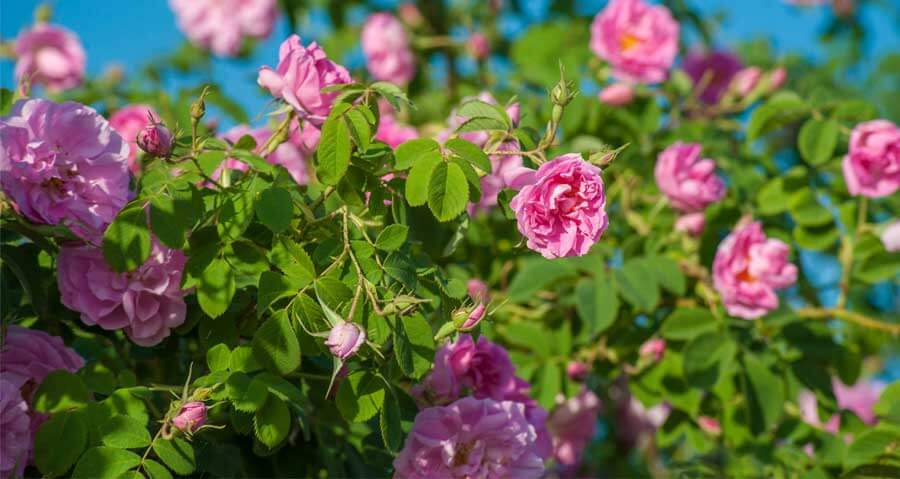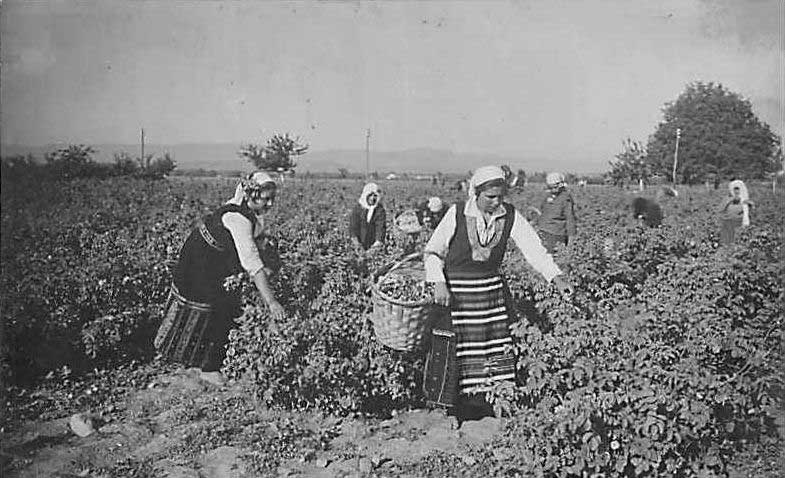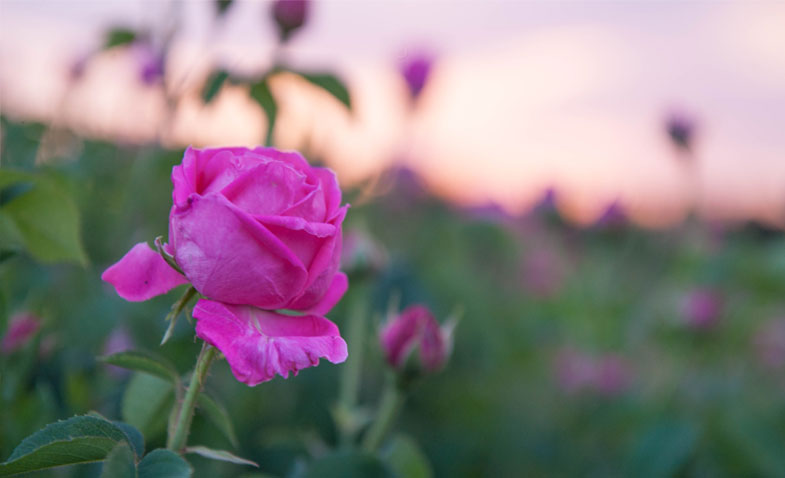Rosa Damascena

High-quality plant material is the key to fine essential oils. Bulgarian rose oil is famous around the world for its characteristic thanks to the Rosa Damascena plant. Today, the flower from the type Rosa Damascena P. Miller is a national symbol of Bulgaria. The Rose Valley is located in the central part of Bulgaria. People living there, devote their lives to cultivating and harvesting the Rosa Damascena plant for over three centuries.
HISTORY OF ROSA DAMASCENA
The plant came to Bulgaria from Persia, which is today’s Iran. It is named after the Persian city of Damask. Traders imported the oil-bearing rose approximately 300 years ago. They started to distill it and laid the foundations of the Bulgarian rose otto. The rich soil and the cool air from the mountains in the Rose valley were so suitable for the Rosa Damascena plant, that the essential oil was with the highest quality. Rosa Damascena essential oil fastly gained popularity across France and Italy. Therefore, Bulgarian traders started exporting and delivering the otto to European perfumers. Bulgarian rose oil became a valuable compound for the fine perfumery of the modern world.

GROWING AND HARVEST
The flower of Rosa Damascena looks very different from the decorative rose. It has a pink color and many blossoms. The Damask rose blooms during May and June when workers carefully hand-pick the blossoms. Each plant has plenty of blossoms and the daily number of blooming roses increases gradually. The harvest period lasts between 15 to 35 days depending on weather conditions. Rosa Damascena blooms steadily under cool weather temperatures, therefore, making the season last longer. Workers come to the fields at dusk and collect the Rose Damascena Miller blossoms until noon. At this time the flowers are fresh and have the highest content of essential rose oil. Rose pickers collect the production in bags and transport it to the distilleries.
A full bag of Rosa Damascena blossoms weighs between 12KG and 18KG depending on the moisture of the plant material. This is a time taking process and only the best pickers reach up to 100 KG of rose blossoms per day. A general rule says that for every hectare of Rosa Damascena gardens, there need to be 10 people collecting the harvest.
When the rose-picking season finishes, every farmer prepares the rose gardens for next season. Farmers use mechanical work and hand labor when growing their Rosa Damascena plantations. The Damask rose needs to be trimmed while the old branches need to be removed. This way the plant remains young and gives birth to blossoms containing high quality rose oil.

INTERESTING FACTS
In the Rose Valley, there are villages with a population who have been rose-pickers for generations. One generation passes the skills to another. Due to the increase of Rose Damascena gardens in later years, more people become involved in this process. We teach them how to pick the roses by giving them an instructional brief during their first day. Due to the limited time of harvest, speed is an important factor in hand-picking. Rose blossoms left from previous days, lose their essential oil and become white. Workers do not pick white blossoms as they would compromise the quality of the finished product. To produce one kilogram of Bulgarian rose oil, we distill between 2800 and 3500 kilograms of Rosa Damascena blossoms.
OUR ROSE GARDENS
As a producer of rose otto, we believe that having our own gardens is very important. Gaining the knowledge to grow Rosa Damascena helps us really understand the nature of the plant. This leads to better know-how and higher quality of the produced essential oil. Additionally, we guide the farmers in order to produce high-grade plant material which is then processed into our Bulgarian rose oil.
If you are interested to visit our Rosa Damascena plantations, please get in touch with us using the contact page.

+ There are no comments
Add yours